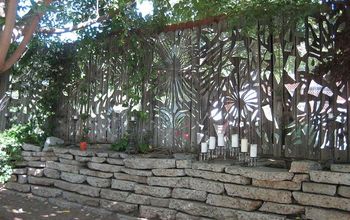For a beginner what are the do’s and don’t when it comes to garden

Related Discussions
GNATS - How to get rid of them?
Somehow my house and garden got tiny gnats that killed my fuchsia plant and fly everywhere. I have tried ALL the Web recommendations - soap and oil dishes, sand in th... See more
Marigolds growing! Should I pinch the buds?
My marigold plants are growing. I heard that pinching the buds until Autumn will allow them to grow without killing the plant. Is this true?
What's the best flower/plant to grow in Texas?
I know that opinions vary, but what's your opinion?!I have great luck w Rosemary plants. Green all year long.
How to get rid of termites?
Suggestions on how to get rid of termites naturally are appreciated however if there is only a chemical solution for these pests please share as well. Thank you!
I don't have bottom leaves on my rubber tree. what should i do.?
I thought about cutting off the top for rooting and let the bottom stay in the pot.




Start small; regardless if veggie garden or 'flower bed' type gardening; learn about your environment - your 'grow zone' - and stick with plants that will do well where you live. Sometimes local Agricultural Extension offices have a 'Master Garden' program that holds classes on plants/gardening/pest control, etc. and they are usually free ...
https://greatist.com/connect/beginners-guide-to-gardening
There are likely experts at the State Extension Service where you live who have either or both of handouts and classes to assist. In the mean time, I'd add the the following to the list of suggestions, questions and considerations. In no particular order:
1. Why are you doing a garden? May seem like a silly question, but there are different reasons, and the plants you choose will be tied to this question. If you want flowers, there are ones that are annuals and others that are perennials. There are some that are higher maintenance than others. If you are just trying to put color in the yard, you can use plants that may not be flowering, but have varied textures and colors. Plants also vary in height, spread (self germination), growth (finished size).
2. All plant have different likes and dislikes in terms of soil (rich, poor, acidic or base, well drained or holding moisture) , sunlight, feeding, humidity, temperature, length of seasons and watering. Plan out what you want to put where and make sure that you aren't ensuring problems by trying to grow plants together that have conflicting needs.
3. As a general rule, I've found that more plants are killed by overwatering than anything else.
4. Plants may have "happy places" in your yard. So even though everything else seems the same, two of the exact same plants may perform significantly better in different parts of the yard even though there doesn't seem to be a reason for it.
5. Don't be afraid of finding out that some things don't work, and some plants just don't do well.
6. Buy plants from reputable growers. Although you would expect all of the sellers to be knowledgeable in terms of what plants are and growing information, I've found that many plants are incorrectly identified on their tags, many plants are mis-marketed under different names, and the folks in the garden departments of stores may not be knowledgeable but answer questions (incorrectly) anyways.
7. Sometimes growing a type of plant is a function of the type for your area. For example, with the humidity in my location, Virginia Beach, it is very difficult to grow true English lavender or to get tarragon to thrive. Yet plants that are marked as lavenden or French lavender are cultivars that do quite well, and a plant known as Mexican Mint Marigold will grow well and has the same oils that provide the taste of tarragon. Russian tarragon grows well, but is not culinary. So you need to do some studying.
8. If you are interested in specific plants, there may also be clubs/societies in your area dedicated to just those plants. In our area, i know we have groups for herbs, day lillies, roses, and bonsai just to name a few. They are typically a good source of information even if you don't want to join.
9. There are what is known as "companion plants" where growing them in proximity to others helps each of them do better. Best example I can think of is that of Tomatoes and Basil
10. The more the plants have been hybridized, the less they will have the components of the original plants. "Knockout roses" grow well and provide color but lack the fragrance of natural roses. Tomatoes that are hybridized (as a generalization) aren't as tasty as heirloom tomatoes.
11. Consider how much work you want to do. Plants range from plant and ignore to those that require much more regular attention.
12. If you are looking for color but aren't particular about specific plants, look for those that are attractive to pollinators such as bees and butterflies.
13. Some plants may end up as sacrificial ones. We grow parsley, dill and fennel knowing in advance that they will be "enjoyed" much more by the caterpillars that love them than by our harvesting and using them. The caterpillars in question become Swallowtail butterflies, so we consider it a fair trade.
Hope that helps. Enjoy!